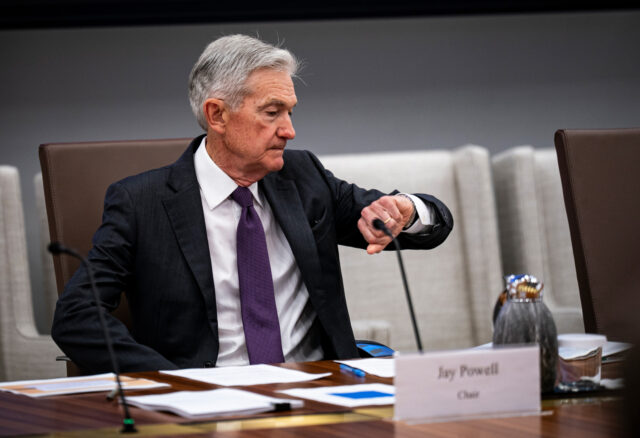Underlying Inflation Cools Sharply in May, Strengthening Case for Fed Rate Cuts

The Federal Reserve’s preferred inflation gauges showed underlying price pressures easing in May, reinforcing the case for interest rate cuts later this year as price growth continues to drift downward.
The Personal Consumption Expenditures (PCE) price index, released Friday by the Commerce Department, rose 0.1 percent for the month, bringing the annual inflation rate to 2.3 percent, modestly higher than April’s 2.1 percent pace but still near the Fed’s 2 percent target.
The core PCE index, which excludes food and energy, rose 0.2 percent in May and 2.7 percent from a year earlier, unchanged from April. While some observers pointed to the monthly increase as evidence of sticky inflation, the more sophisticated measures used by the Fed tell a different story.
The Dallas Fed’s Trimmed Mean PCE index—designed to filter out extreme price swings—slowed to 2.5 percent year-over-year, down from 2.7 percent in April and its lowest level in more than three years. The Cleveland Fed’s Median PCE measure rose just 0.2 percent for the month and held steady at 3.0 percent year-over-year, suggesting inflation is not accelerating and may be gradually cooling.
These measures are closely followed by Federal Reserve officials as more accurate indicators of persistent inflation trends. Their recent movements point to a continued easing of underlying price pressures, despite month-to-month fluctuations in the headline and core indexes.
The data come amid growing division within the Fed over when to begin lowering rates. While the central bank held its benchmark rate steady at the June meeting, some policymakers are now publicly backing rate cuts, citing progress on inflation and signs of slowing in other parts of the economy.
Governors Christopher Waller and Michelle Bowman—both appointed by President Trump—have indicated that the inflation outlook may no longer justify holding policy at restrictive levels. Both have downplayed the risk that Trump’s tariffs will lead to a significant inflation resurgence.
Futures markets are now assigning increasing odds to a rate cut at the Fed’s September meeting, with investors expecting at least one more reduction before the end of the year—especially if core inflation continues to trend lower.